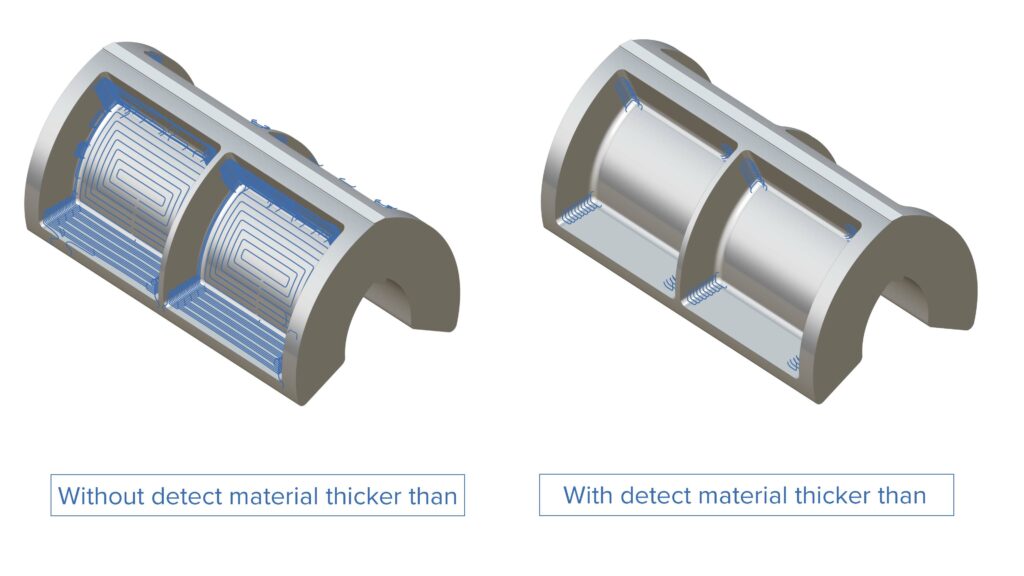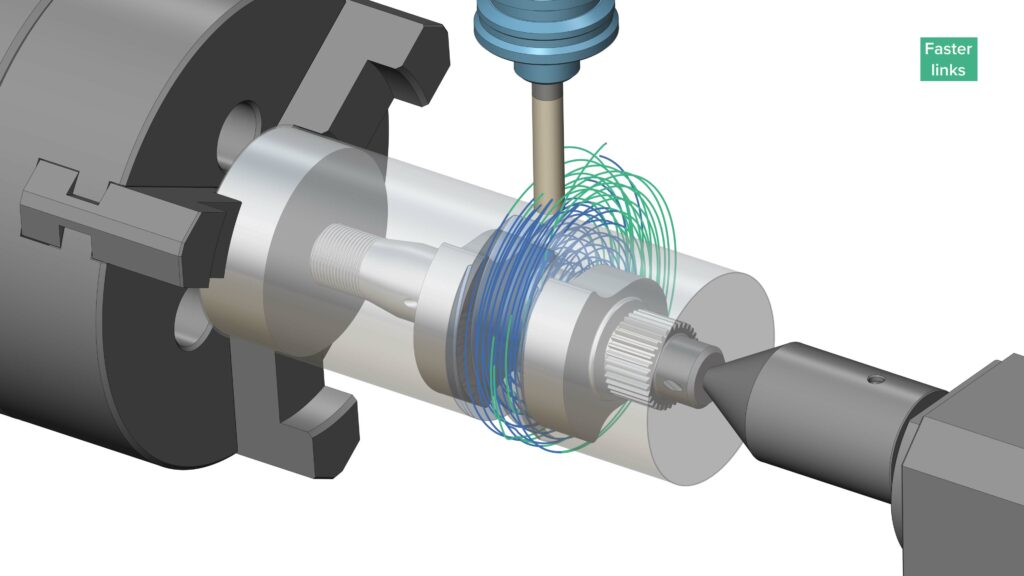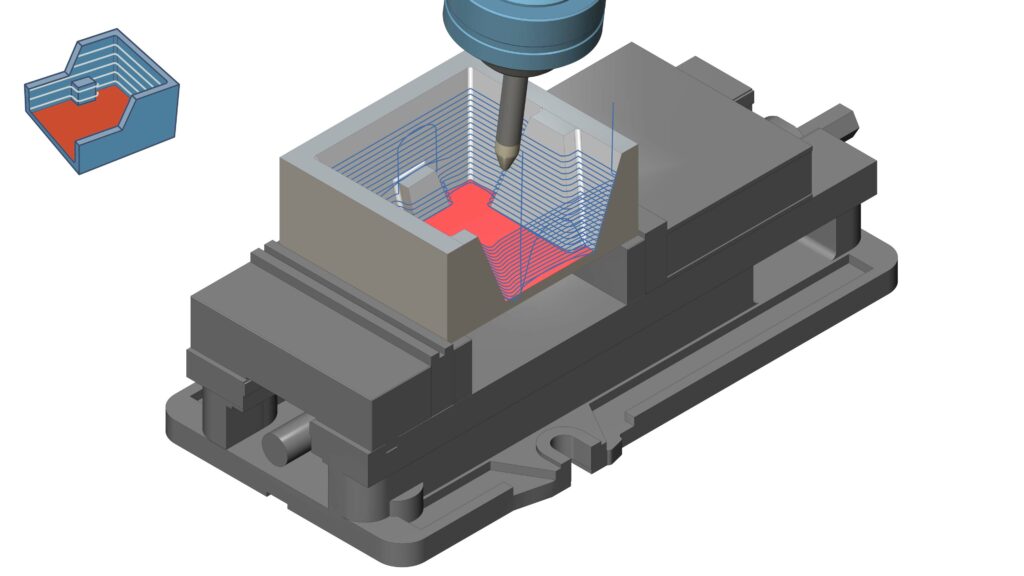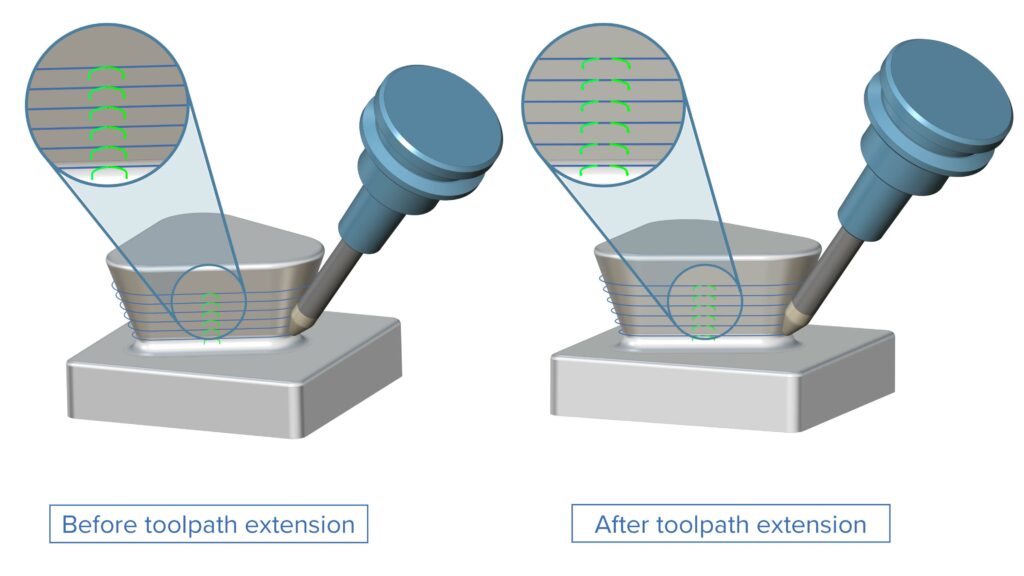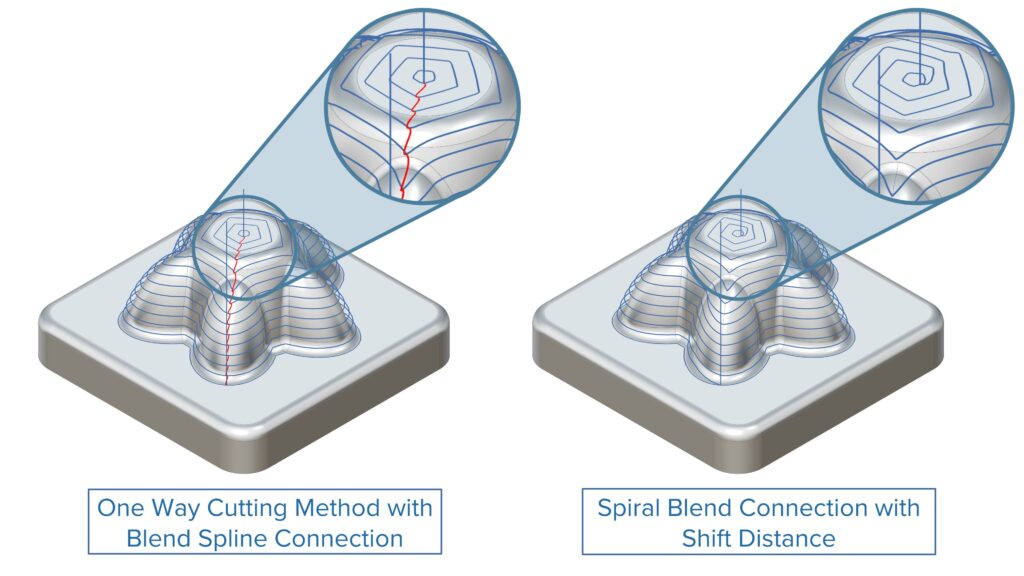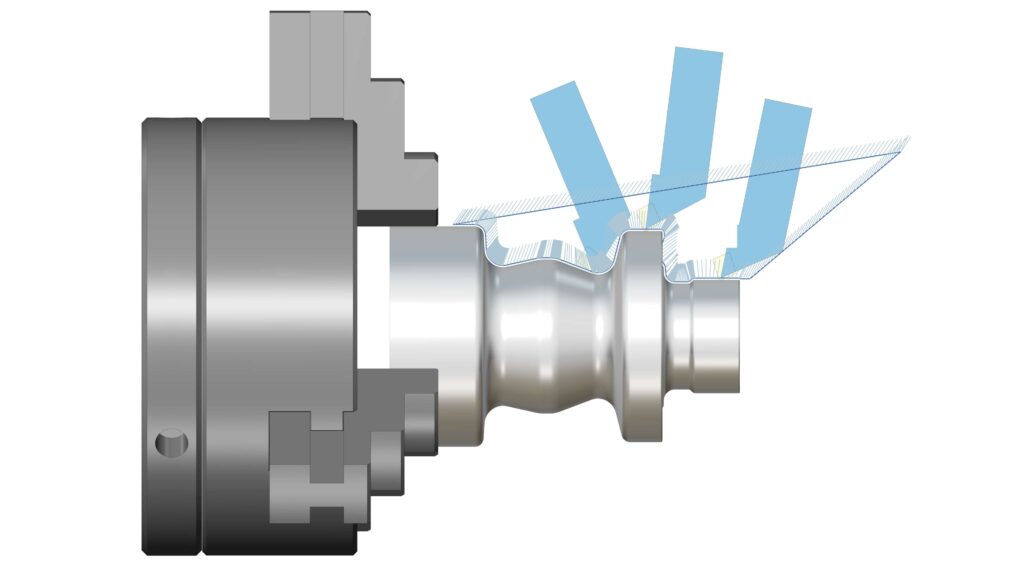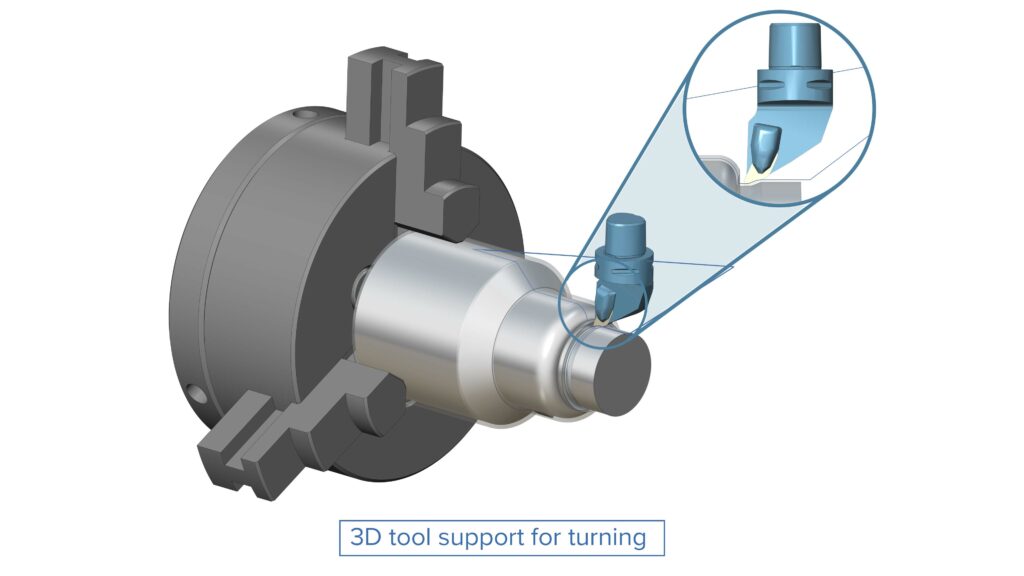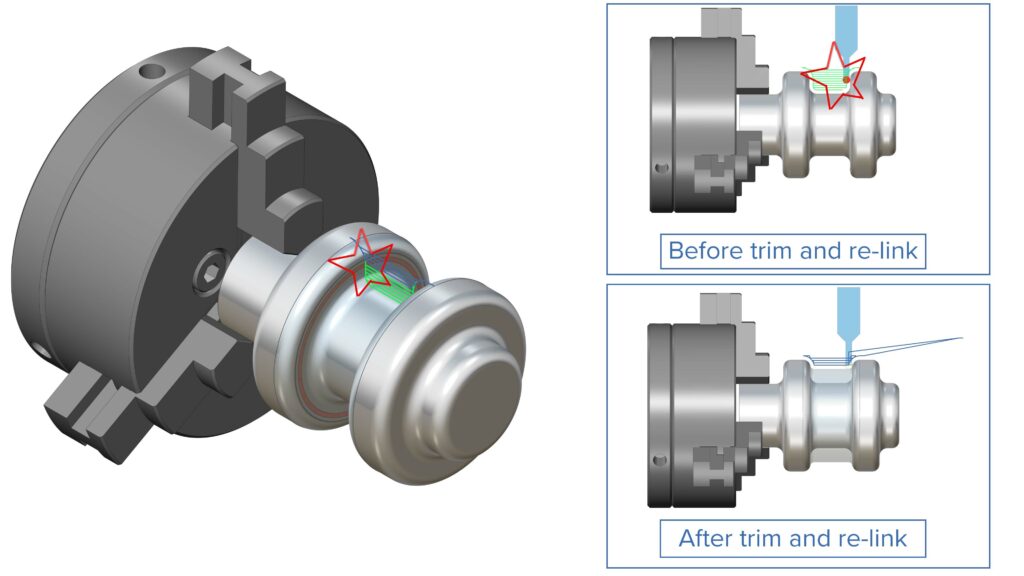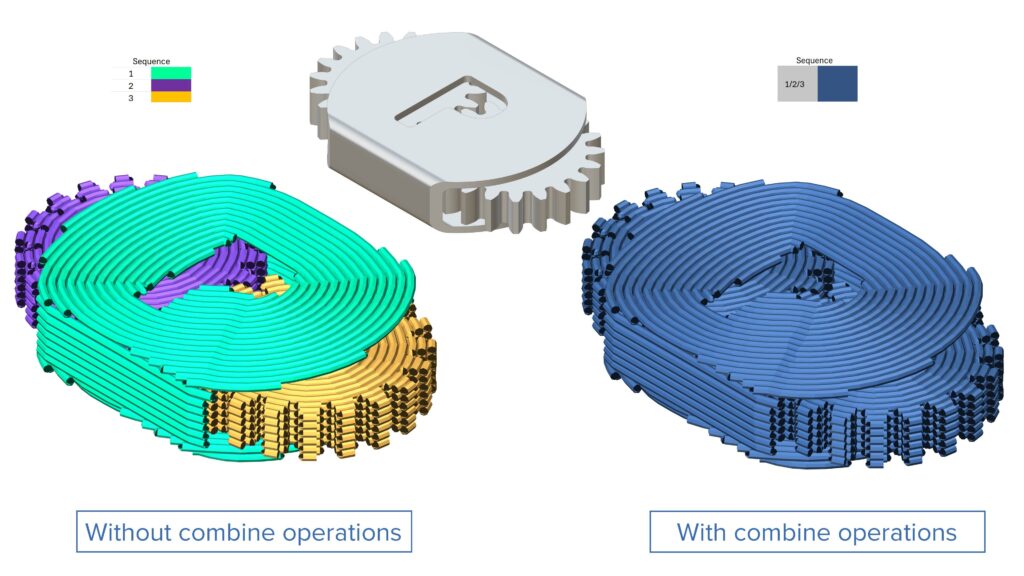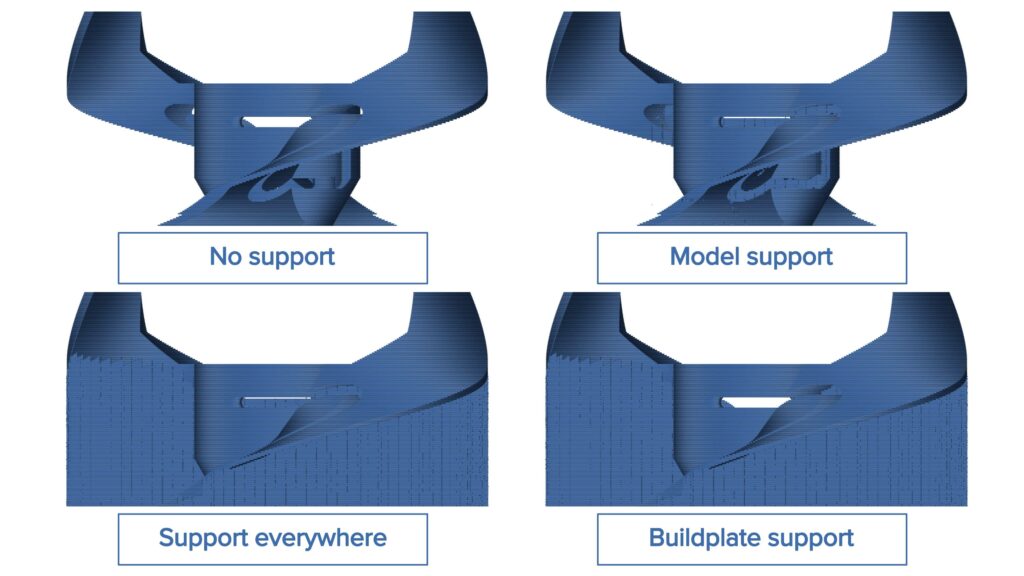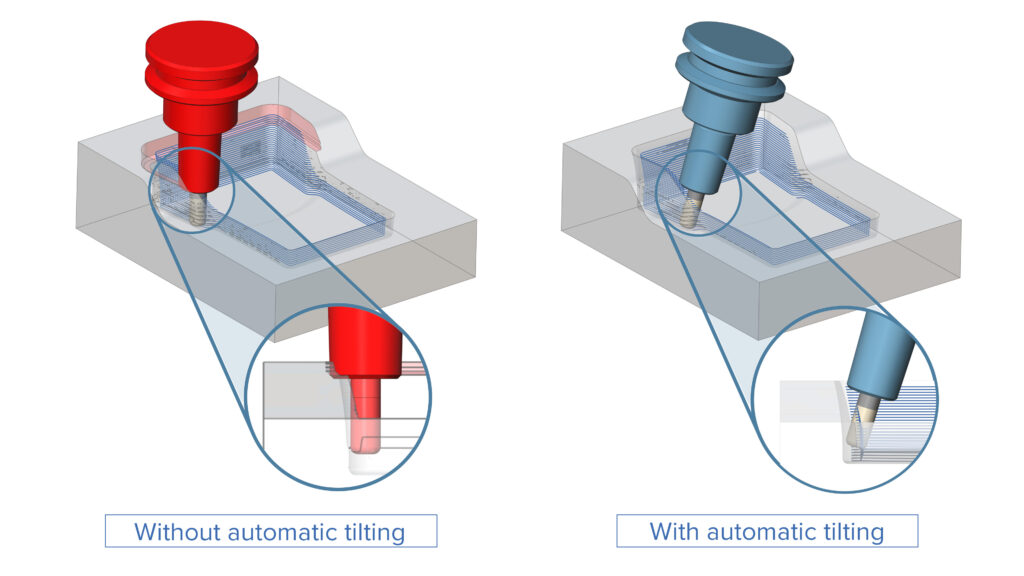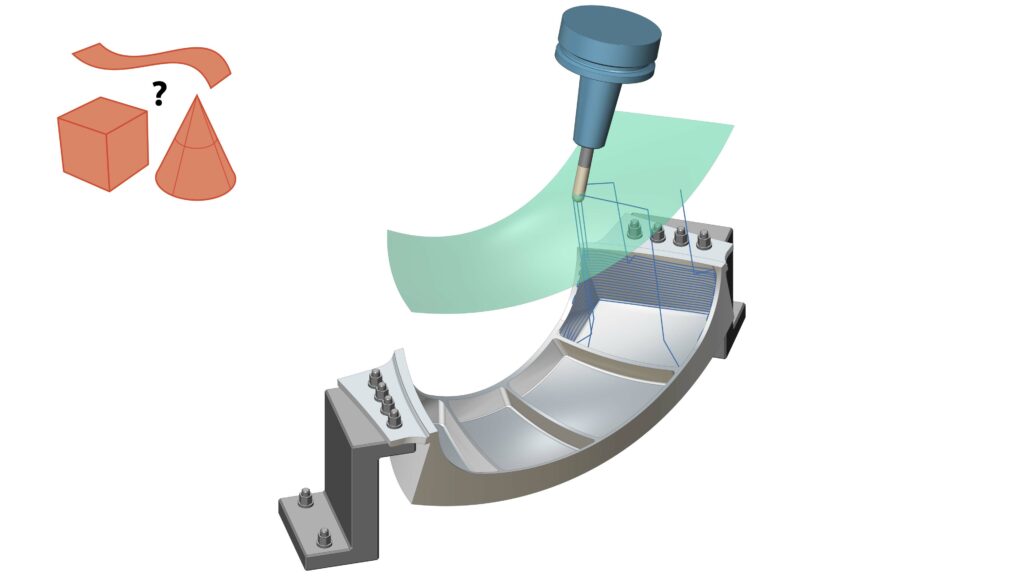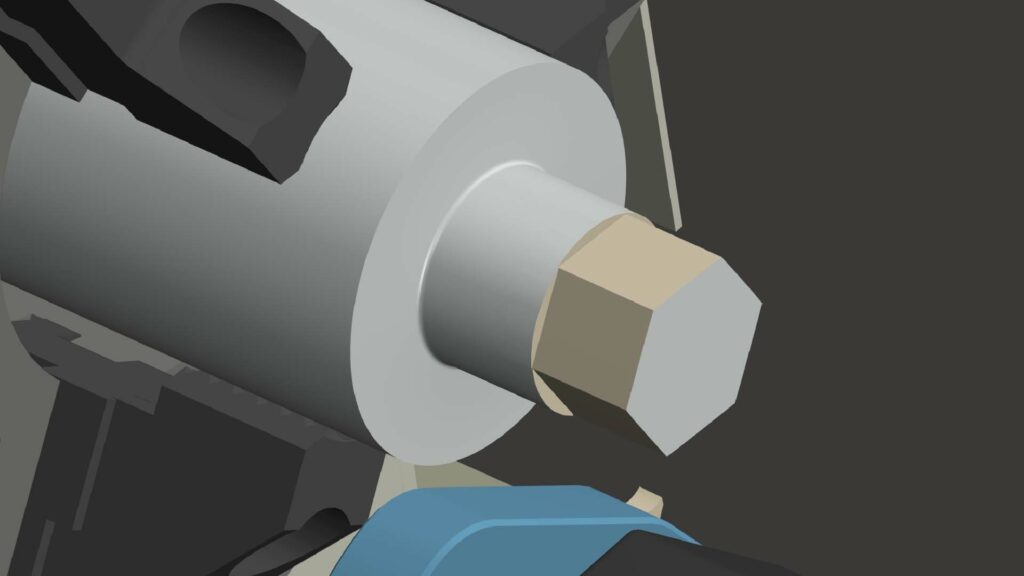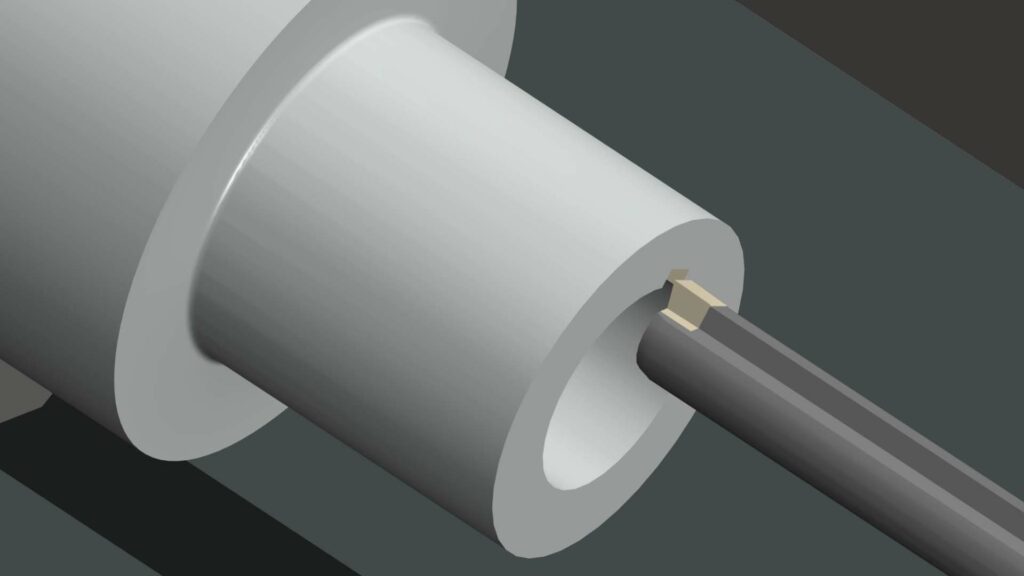Software Release 2024.08 Highlights
ModuleWorks announces the 2024.08 release of its software components. This latest release of the ModuleWorks SDK includes various new and enhanced features aimed at increasing safety, toolpath generation efficiency, and part quality. These features contain enhancements across multiple components, ranging from Multi-Axis Roughing to Turning and many more.
Toolpath
Multi-Axis Roughing | Area Roughing
Detect Material Thicker Than
Challenge: The rest roughing operation currently creates unnecessary passes due to material from the previous operation’s tool trace areas being detected.
Solution: Users can now provide a pre-defined rest stock thickness to precisely detect the rest material. The value should be greater than the rest material from the previous operation.
Benefits: This enhancement eliminates all the unnecessary passes in the rest roughing operation, generating much cleaner toolpaths that reduce machining time and tool wear.
Multi-Axis Roughing | Turn Milling
Faster Links in Eccentric Milling
Challenge: The Turn Milling strategy generates a spun profile of the stock. When machining eccentric bodies, a full rotation around the defined rotation axis is performed, generating a stock that is bigger than the real one. This causes non-cutting moves to run at a slower feed.
Solution: The correct shape of the stock is now detected and when the tool is not cutting the stock, a faster link is applied.
Benefits: Eccentric parts can now be machined more efficiently, reducing the overall machining cycle time.
Multi-Axis Surface Finishing | Wall, Floor and Rest Finishing
Floor Parallel Pattern for Wall Finishing
Challenge: In certain cases, the guide curve for geodesic operations on the wall is not ideal for generating the geodesic offset pattern. As a result, the generated toolpaths look too complicated and are not intuitive.
Solution: The planar floor surface can now be used to generate the offset pattern. This is more robust in scenarios where the wall surface is disrupted by features.
Benefits: This gives users more flexibility in creating the desired wall finishing toolpath.
Multi-Axis Surface Finishing | Wall, Floor and Rest Finishing
Toolpath Extensions
Challenge: Working with advanced tools, such as barrel tools, might result in larger cusps at the start and end points of the toolpath when machining closed shapes.
Solution: This new feature enables users to extend toolpaths at the start and end points of closed loops.
Benefits: This feature helps to reduce the size of cusps at the start and end points of the toolpath, generating an even surface finish on walls.
3-Axis Machining | 3-Axis
Spiral Blend Connection with Shift Distance for Constant Cusp
Challenge: One way and true spiral cutting methods cannot properly connect a toolpath when it collapses into multiple areas, resulting in a varying stepover and cusp.
Solution: A new option has been added to allow spiral blend connections with a shift distance.
Benefits: Using a spiral blend connection with a shift distance provides a better surface finish compared to one way cutting method with blend spline, direct, or follow surface links for areas where a single region collapses into multiple regions.
Turning | Turning
B-Axis Profile Turning
Challenge: Until now, it has not been possible to create turning profile toolpaths with simultaneous tool axis tilting. This has made it impossible to reach undercut areas or use short tool overhangs.
Solution: Users can now create a turning toolpath with simultaneous tool axis tilting. This enables the tip to tilt around the tip center while gouge checking the insert profile with reference to the part curve, thereby creating a safe B-axis profile turning toolpath. The following inserts are currently supported for B-axis profile turning: Round, Triangle, Square, Parallelogram, and Diamond.
Benefits: Undercut areas can now be reached more easily, even with short tool overhangs. This also improves machining accuracy.
Turning | Turning/PrimeTurning™
3D Tool Support for Turning Toolpaths
Challenge: Currently, there is no way to define holder profiles with complex contours because only 2D profiles are accepted as input geometries for the tool insert and tool holder.
Solution: Now, users can use the 3D mesh file as an input geometry for the tool insert and tool holder.
Benefits: This enhancement makes it much easier to assign the input geometry for the tool holder and tool insert, improving the accuracy of collision and gouge detection.
Turning | Turning/PrimeTurning™
Trim and Re-link Turning Toolpath
Challenge: Currently, if a collision or gouge is detected during the toolpath calculation, the operation is immediately aborted.
Solution: Users can now define an additional stop condition to trim and re-link.
Benefits: This enhancement enables users to trim colliding passes and re-link them with safe passes, improving programming efficiency.
Additive | Multi-Axis Additive
Combine Operations
Challenge: Currently, users cannot process different areas of a part with different parameter sets layer by layer. If several components were to be built up one after the other and next to each other, there would be collisions and bonding problems due to heat loss.
Solution: Now, the operation manager is able to combine the operations by re-sorting them so they can be processed layer by layer.
Benefits: With this feature, users build up multiple areas with different parameter sets without collisions and no heat loss. This reduces the possible defects.
Additive | Fused Deposition Modeling
Support Placement Options
Challenge: Users want to choose where to build the support to avoid, for example, damage to the part surface.
Solution: In addition to the default behavior, users can now choose whether to build the support only on the part itself or only up to the platform, avoiding contact with the part.
Benefits: Users have greater control over the placement to ensure that no part surfaces are damaged. Also, unwanted support structures can be avoided, reducing the build time.
Core Component Technologies | Tilting Core
Autotilt Support for Bull Nose Tools
Challenge: Bull nose tools need to tilt to avoid collisions, but they have not been able to do this until now.
Solution: By using off-center rotation, which is used for titling barrel tools, bull nose tools can also be tilted within a limited range.
Benefits: This feature enables bull nose tools to be used with the autotilt option to avoid collisions.
Core Component Technologies | Linking
User Defined Clearance Areas
Challenge: Currently, the clearance types are limited which sometimes results in long retracts and causes the machine to go out of limits.
Solution: The feature allows the selection of user-defined surfaces as a clearance area.
Benefits: With this feature, toolpaths can be limited to shorter retracts while staying within machining limits. This also reduces the overall cycle time while providing more flexibility and control to the user.
Simulation
Simulation SDK | CNC Simulation
Polygonal Turning
Challenge: Polygonal turning processes promise high productivity and excellent surface finishes but are risky to implement without previous toolpath simulation.
Solution: With CNC Simulation’s tool usage type UT_SHAPING, polygonal turning processes can be simulated.
Benefits: Verifying polygonal turning processes with CNC Simulation ensures maximum productivity during and beyond production machining. Simulating polygonal turning processes helps to achieve target geometries while avoiding collisions.
Simulation SDK | CNC Simulation
Shaping on Lathes
Challenge: Shaping can be applied to machine non-rotationally symmetric geometries on different machine kinematics but is often not covered by simulation solutions.
Solution: With the CNC Simulation tool usage type UT_SHAPING, users can simulate shaping processes to avoid collisions and achieve the desired target geometry.
Benefits: Verifying shaping processes with CNC Simulation ensures maximum productivity in and beyond production machining.
There are many other new enhancements in this release.
